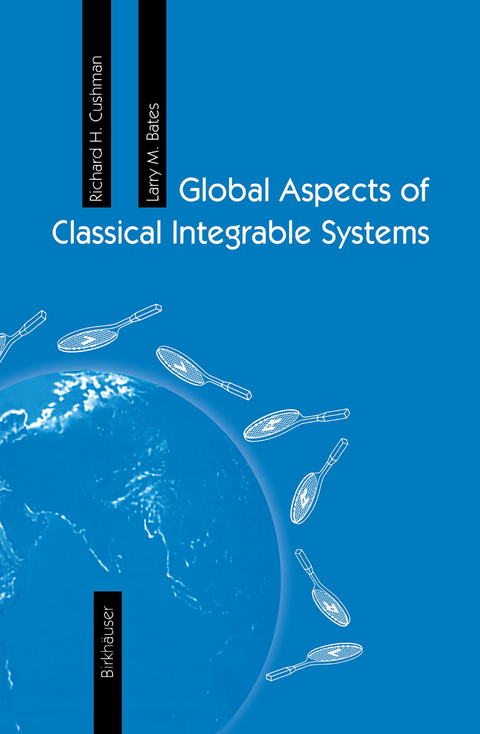
Global Aspects of Classical Integrable Systems
Springer Basel (Verlag)
978-3-0348-9817-1 (ISBN)
I. The harmonic oscillator.- 1. Hamilton's equations and Sl symmetry.- 2. S1 energy momentum mapping.- 3. U(2) momentum mapping.- 4. The Hopf fibration.- 5. Invariant theory and reduction.- 6. Exercises.- II. Geodesics on S3.- 1. The geodesic and Delaunay vector fields.- 2. The SO(4) momentum mapping.- 3. The Kepler problem.- 4. Exercises.- III The Euler top.- 1. Facts about SO(3).- 2. Left invariant geodesics.- 3. Symmetry and reduction.- 4. Qualitative behavior of the reduced system.- 5. Analysis of the energy momentum map.- 6. Integration of the Euler-Arnol'd equations.- 7. The rotation number.- 8. A twisting phenomenon.- 9. Exercises.- IV. The spherical pendulum.- 1. Liouville integrability.- 2. Reduction of the Sl symmetry.- 3. The energy momentum mapping.- 4. Rotation number and first return time.- 5. Monodromy.- 6. Exercises.- V. The Lagrange top.- 1. The basic model.- 2. Liouville integrability.- 3. Reduction of the right Sl action.- 4. Reduction of the left S1 action.- 5. The Poisson structure.- 6. The Euler-Poisson equations.- 7. The energy momemtum mapping.- 8. The Hamiltonian Hopf bifurcation.- 9. Exercises.- Appendix A. Fundamental concepts.- 1. Symplectic linear algebra.- 2. Symplectic manifolds.- 3. Hamilton's equations.- 4. Poisson algebras and manifolds.- 5. Exercises.- Appendix B. Systems with symmetry.- 1. Smooth group actions.- 2. Orbit spaces.- 2.1 Orbit space of a proper action.- 2.2 Orbit space of a free action.- 2.3 Orbit space of a locally free action.- 3. Momentum mappings.- 3.1 General properties.- 3.2 Normal form.- 4. Reduction: the regular case.- 5. Reduction: the singular case.- 6. Exercises.- Appendix C. Ehresmann connections.- 1. Basic properties.- 2. The Ehresmann theorems.- 3. Exercises.- Appendix D. Action angle coordinates.- 1.Local action angle coordinates.- 2. Monodromy.- 3. Exercises.- Appendix E. Basic Morse theory.- 1. Preliminaries.- 2. The Morse lemma.- 3. The Morse isotopy lemma.- 4. Exercises.- Notes.- References.- Acknowledgements.
"Ideal for someone who needs a thorough global understanding of one of these systems [and] who would like to learn some of the tools and language of modern geometric mechanics. The exercises at the end of each chapter are excellent. The book could serve as a good supplementary text for a graduate course in geometric mechanics."
--SIAM Review
| Erscheint lt. Verlag | 5.10.2012 |
|---|---|
| Zusatzinfo | XVI, 435 p. |
| Verlagsort | Basel |
| Sprache | englisch |
| Maße | 155 x 235 mm |
| Gewicht | 694 g |
| Themenwelt | Naturwissenschaften ► Physik / Astronomie ► Allgemeines / Lexika |
| Naturwissenschaften ► Physik / Astronomie ► Theoretische Physik | |
| Schlagworte | Algebra • classical mechanics • hamiltonian mechanics • manifold • pendulum |
| ISBN-10 | 3-0348-9817-7 / 3034898177 |
| ISBN-13 | 978-3-0348-9817-1 / 9783034898171 |
| Zustand | Neuware |
| Haben Sie eine Frage zum Produkt? |
aus dem Bereich



